195 results found for 'Temperature'. Prev |1|2|3|4|5|6|7|8 | Next | View 100 per page
Low relevance matches: 81 other results may be of interest to you. Show low relevance matches
Describing biodiversity - Ecosystems are diverse, composed of varied habitats and can be described in terms of their component species, species interactions and the abiotic factors that make up the environment ACSBL021 Year 11 Biodiversity and the interconnectedness of life
Describing biodiversity - In addition to biotic factors, abiotic factors including climate and substrate can be used to and classify environments ACSBL029 Year 11 Biodiversity and the interconnectedness of life
Ecosystem dynamics - Models of ecosystem interactions (for example, food webs, successional models) can be used to predict the impact of change and are based on interpretation of and extrapolation from sample data (for example, data derived from ecosystem surveying techniques ACSBL110 Year 12 Maintaining the internal environment
Homeostasis - Homeostasis involves a stimulus response model in which change in external or internal environmental conditions is detected and appropriate responses occur via negative feedback; in vertebrates, receptors and effectors are linked via a control centre by n ACSCH036 Year 11 Chemical fundamentals
Chemical reactions - All chemical reactions involve the creation of new substances and associated energy transformations, commonly observable as changes in the temperature of the surroundings and/or the emission of light ACSCH060 Year 11 Molecular interactions and reactions
Intermolecular forces and gases - The behaviour of gases, including the qualitative relationships between pressure, temperature and volume, can be explained using kinetic theory ACSCH061 Year 11 Molecular interactions and reactions
Aqueous solutions and acidity - Water is a key substance in a range of chemical systems because of its unique properties, including its boiling point, density in solid and liquid phases, surface tension, and ability to act as a solvent ACSCH063 Year 11 Molecular interactions and reactions
Aqueous solutions and acidity - The concentration of a solution is defined as the amount of solute divided by the amount of solution; this can be represented in a variety of ways including by the number of moles of the solute per litre of solution (mol L1) and the mass of the solute pe ACSCH064 Year 11 Molecular interactions and reactions
Aqueous solutions and acidity - The presence of specific ions in solutions can be identified using analytical techniques based on chemical reactions, including precipitation and acidbase reactions ACSCH065 Year 11 Molecular interactions and reactions
Aqueous solutions and acidity - The solubility of substances in water, including ionic and molecular substances, can be explained by the intermolecular forces between species in the substances and water molecules, and is affected by changes in temperature ACSPH020 Year 11 Thermal nuclear and electrical physics
Heating processes - Provided a substance does not change state, its temperature change is proportional to the amount of energy added to or removed from the substance; the constant of proportionality describes the heat capacity of the substance ACSPH022 Year 11 Thermal nuclear and electrical physics
Heating processes - Two systems in contact transfer energy between particles so that eventually the systems reach the same temperature; that is, they are in thermal equilibrium ACSPH021 Year 11 Thermal nuclear and electrical physics
Heating processes - Change of state involves internal energy changes to form or break bonds between atoms or molecules; latent heat is the energy required to be added to or removed from a system to change the state of the system
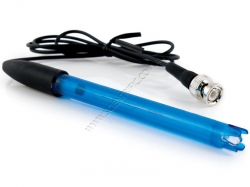
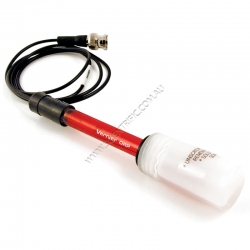
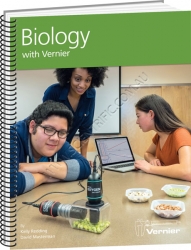



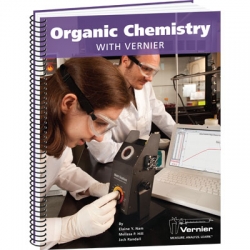




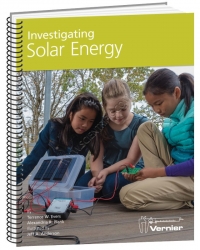

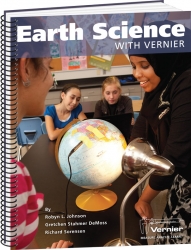






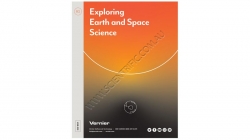

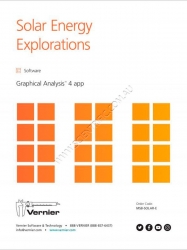
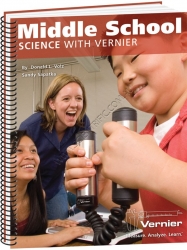

195 results found for 'Temperature'. Prev |1|2|3|4|5|6|7|8 | Next | View 100 per page
Low relevance matches: 81 other results may be of interest to you. Show low relevance matches
Curriculum resources related to 'Temperature'
ACSBL019 Year 11 Biodiversity and the interconnectedness of lifeDescribing biodiversity - Ecosystems are diverse, composed of varied habitats and can be described in terms of their component species, species interactions and the abiotic factors that make up the environment ACSBL021 Year 11 Biodiversity and the interconnectedness of life
Describing biodiversity - In addition to biotic factors, abiotic factors including climate and substrate can be used to and classify environments ACSBL029 Year 11 Biodiversity and the interconnectedness of life
Ecosystem dynamics - Models of ecosystem interactions (for example, food webs, successional models) can be used to predict the impact of change and are based on interpretation of and extrapolation from sample data (for example, data derived from ecosystem surveying techniques ACSBL110 Year 12 Maintaining the internal environment
Homeostasis - Homeostasis involves a stimulus response model in which change in external or internal environmental conditions is detected and appropriate responses occur via negative feedback; in vertebrates, receptors and effectors are linked via a control centre by n ACSCH036 Year 11 Chemical fundamentals
Chemical reactions - All chemical reactions involve the creation of new substances and associated energy transformations, commonly observable as changes in the temperature of the surroundings and/or the emission of light ACSCH060 Year 11 Molecular interactions and reactions
Intermolecular forces and gases - The behaviour of gases, including the qualitative relationships between pressure, temperature and volume, can be explained using kinetic theory ACSCH061 Year 11 Molecular interactions and reactions
Aqueous solutions and acidity - Water is a key substance in a range of chemical systems because of its unique properties, including its boiling point, density in solid and liquid phases, surface tension, and ability to act as a solvent ACSCH063 Year 11 Molecular interactions and reactions
Aqueous solutions and acidity - The concentration of a solution is defined as the amount of solute divided by the amount of solution; this can be represented in a variety of ways including by the number of moles of the solute per litre of solution (mol L1) and the mass of the solute pe ACSCH064 Year 11 Molecular interactions and reactions
Aqueous solutions and acidity - The presence of specific ions in solutions can be identified using analytical techniques based on chemical reactions, including precipitation and acidbase reactions ACSCH065 Year 11 Molecular interactions and reactions
Aqueous solutions and acidity - The solubility of substances in water, including ionic and molecular substances, can be explained by the intermolecular forces between species in the substances and water molecules, and is affected by changes in temperature ACSPH020 Year 11 Thermal nuclear and electrical physics
Heating processes - Provided a substance does not change state, its temperature change is proportional to the amount of energy added to or removed from the substance; the constant of proportionality describes the heat capacity of the substance ACSPH022 Year 11 Thermal nuclear and electrical physics
Heating processes - Two systems in contact transfer energy between particles so that eventually the systems reach the same temperature; that is, they are in thermal equilibrium ACSPH021 Year 11 Thermal nuclear and electrical physics
Heating processes - Change of state involves internal energy changes to form or break bonds between atoms or molecules; latent heat is the energy required to be added to or removed from a system to change the state of the system
Products related to 'Temperature'

Vernier pH Electrode BNC
VERNIER PH ELECTRODE
This is a replacement electrode only. It will NOT work without either EA-BTA Vernier Electrode Amplifier or the discontinued Vernier Go Wireless Electrode Amplifier
This Vernier gel-filled...
Order code: PH-BNC



Vernier ORP Replacement Electrode
VERNIER ORP REPLACEMENT ELECTRODE
A replacement electrode for use with the ORP Sensor, the GW-EA Go!Wireless Electrode Amplifier and the EA-BTA Electrode Amplifier.
The Vernier ORP sensor measures the ability of a solution to act as an oxidising agent or reducing agen...
Order code: ORP-BNC

Biology with Vernier
BIOLOGY WITH VERNIER
Biology with Vernier is a lab book containing 31 experiments in cell respiration, photosynthesis, membrane diffusion, osmosis, human physiology, transpiration, fermentation and other important biology concepts.
Experiments are included for 12 Vernier...
Order code: BWV

Biology with Vernier - Electronic Version
BIOLOGY WITH VERNIER - ELECTRONIC
Biology with Vernier is a lab book containing 31 experiments in cell respiration, photosynthesis, membrane diffusion, osmosis, human physiology, transpiration, fermentation and other important biology concepts.
Experiments are included f...
Order code: BWV-E

Advanced Chemistry with Vernier
ADVANCED CHEMISTRY WITH VERNIER
Advanced Chemistry with Vernier is a lab book containing 35 advanced chemistry experiments designed for use with Vernier data-collection technology. There are four student alternative versions included for each experiment: Logger Pro, LabQu...
Order code: CHEM-A

Advanced Chemistry with Vernier - Electronic Version
ADVANCED CHEMISTRY WITH VERNIER - ELECTRONIC
Advanced Chemistry with Vernier is a lab book containing 35 advanced chemistry experiments designed for use with Vernier data-collection technology. There are four student alternative versions included for each experiment: Logg...
Order code: CHEM-A-E

Organic Chemistry with Vernier
ORGANIC CHEMISTRY WITH VERNIER
Organic Chemistry with Vernier is a lab book containing experiments designed for use with Vernier data-collection technology in tertiary organic chemistry courses. Experiments cover a broad range of topics and techniques including compound i...
Order code: CHEM-O

Organic Chemistry with Vernier - Electronic Version
ORGANIC CHEMISTRY WITH VERNIER - ELECTRONIC
Organic Chemistry with Vernier is a lab book containing experiments designed for use with Vernier data-collection technology in tertiary organic chemistry courses. Experiments cover a broad range of topics and techniques includi...
Order code: CHEM-O-E

Chemistry with Vernier
CHEMISTRY WITH VERNIER
Chemistry with Vernier is a lab book containing more than 35 experiments in thermochemistry, gas laws, acid-base reactions, equilibrium, electrochemistry, electrolytes, states of matter and more.
Experiments are included for the Gas Pressure Sen...
Order code: CWV

Chemistry with Vernier - Electronic Version
CHEMISTRY WITH VERNIER - ELECTRONIC
Chemistry with Vernier is a lab book containing more than 35 experiments in thermochemistry, gas laws, acid-base reactions, equilibrium, electrochemistry, electrolytes, states of matter and more.
Experiments are included for the Gas...
Order code: CWV-E

Vernier Investigating Gas Pressure (Elementary ebook)
VERNIER INVESTIGATING GAS PRESSURE EBOOK
Investigate the behaviour of gas pressure when more gas is added, or when the volume of the container changes, with your Year 3-6 students using this electronic book of experiments and a
Order code: ELB-GP-E

Vernier Investigating Solar Energy
VERNIER INVESTIGATING SOLAR ENERGY
This book contains nine hands-on experiments and two culminating engineering projects that allow K-8 students to learn about solar energy and develop solutions to real-world problems.
Using the KW-SEEK KidWind Solar Energy Exploration...
Order code: ELB-SOLAR

Vernier Investigating Solar Energy - Electronic Version
VERNIER INVESTIGATING SOLAR ENERGY - ELECTRONIC
This book contains nine hands-on experiments and two culminating engineering projects that allow K-8 students to learn about solar energy and develop solutions to real-world problems.
Using the KW-SEEK KidWind Solar Energ...
Order code: ELB-SOLAR-E

Earth Science with Vernier
EARTH SCIENCE WITH VERNIER
Earth Science with Vernier is a lab book containing 33 experiments in the subjects of geology, meteorology, hydrology, oceanography, energy, water quality and soil quality.
NOTE
If you have previously purchased a copy of this Vernier ...
Order code: ESV



Earth Science with Vernier - Electronic Version
EARTH SCIENCE WITH VERNIER - ELECTRONIC
Earth Science with Vernier is a lab book containing 33 experiments in the subjects of geology, meteorology, hydrology, oceanography, energy, water quality and soil quality.
NOTE
• When you purchase this electronic book yo...
Order code: ESV-E

Human Physiology with Vernier
HUMAN PHYSIOLOGY WITH VERNIER
Human Physiology with Vernier is a lab book containing 24 experiments designed to encourage students to think about the physiology of various human organ systems by measuring the activity of the upper respiratory tract, the lungs, the heart, ...
Order code: HP-A



Human Physiology with Vernier - Electronic Version
HUMAN PHYSIOLOGY WITH VERNIER - ELECTRONIC
Human Physiology with Vernier is a lab book containing 24 experiments designed to encourage students to think about the physiology of various human organ systems by measuring the activity of the upper respiratory tract, the lungs...
Order code: HP-A-E

Vernier Climate and Meteorology Experiments E-Book
VERNIER CLIMATE AND METEROLOGY EXPERIMENTS E-BOOK
Vernier Climate and Meteorology Experiments e-book includes 11 experiments with interactive investigations that challenge students to use data-collection technology to explore weather, climate and other important weather-r...
Order code: HSB-CM-E

Vernier Food Chemistry Experiments
Vernier Food Chemistry Experiments
Vernier Food Chemistry Experiments has 14 experiments that use food as a means to explore crucial chemistry concepts. Students are more likely to engage with science when they see concepts applied to the real world. These experiments use...
Order code: HSB-FOOD

Vernier Food Chemistry Experiments E-Book
VERNIER FOOD CHEMISTRY EXPERIMENTS E-BOOK
Vernier Food Chemistry Experiments e-book has 14 experiments that use food as a means to explore crucial chemistry concepts. Students are more likely to engage with science when they see concepts applied to the real world. These e...
Order code: HSB-FOOD-E

Vernier Exploring Earth and Space Science - E Version
VERNIER EXPLORING EARTH AND SPACE SCIENCE EBOOK
Explore the Earth science topics of weather, soil and water quality with your Years 4-8 Middle School students. Collect, share and analyze sensor data with Vernier's free Graphical Analysis 4 software. The GA4 app facilitate...
Order code: MSB-ESS-E

Vernier Exploring Physical Science - E Version
VERNIER PHYSICAL SCIENCE EBOOK
Explore various physical science topics in basic chemistry and physics from matter and energy to motion and forces with your Years 4-8 Middle School students. Collect, share and analyze sensor data with Vernier's free Graphical Analysis 4 so...
Order code: MSB-PS-E

Vernier Solar Energy Explorations - Electronic Version
VERNIER SOLAR ENERGY EXPLORATIONS - ELECTRONIC
Vernier Solar Energy Explorations is an electronic download that consists of eight solar energy experiments for middle school science students to study renewable energy and solar power while practicing engineering design.
...
Order code: MSB-SOLAR-E

Middle School Science with Vernier
MIDDLE SCHOOL SCIENCE WITH VERNIER
Middle School Science with Vernier was written specifically for students in grades 6-8. It is a lab book containing 38 experiments in earth science, life science and physical science, making use of ten different Vernier middle school sen...
Order code: MSV

Middle School Science with Vernier - Electronic Version
MIDDLE SCHOOL SCIENCE WITH VERNIER
Middle School Science with Vernier was written specifically for students in grades 6-8. It is a lab book containing 38 experiments in earth science, life science and physical science, making use of ten different Vernier middle school sen...
Order code: MSV-E
195 results found for 'Temperature'. Prev |1|2|3|4|5|6|7|8 | Next | View 100 per page


